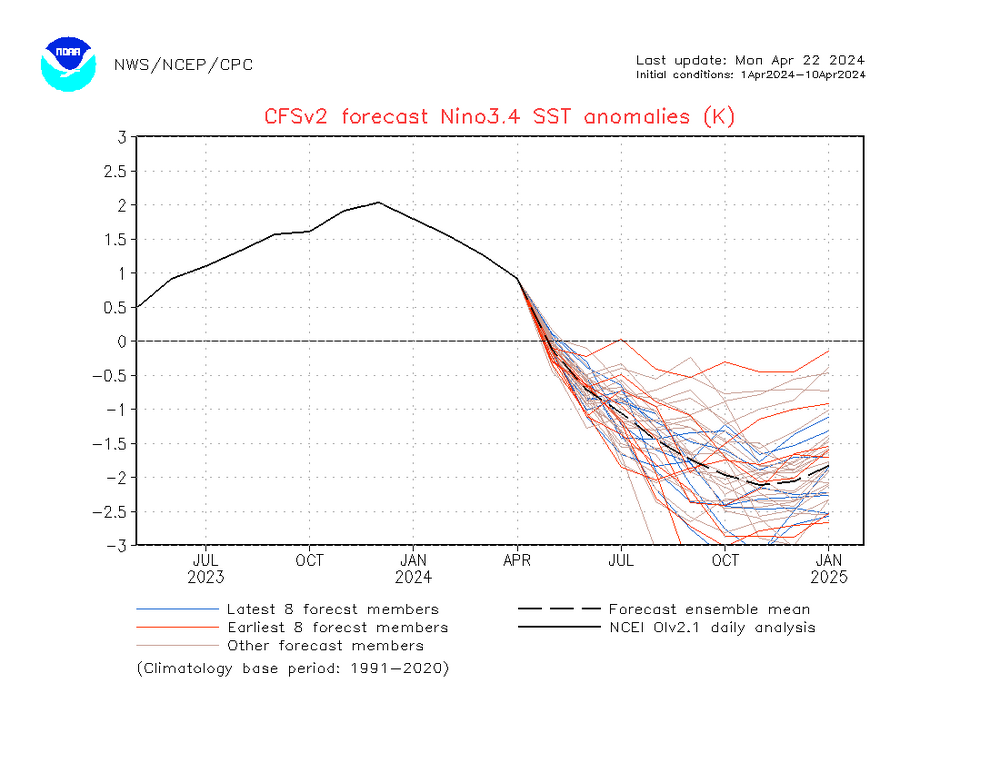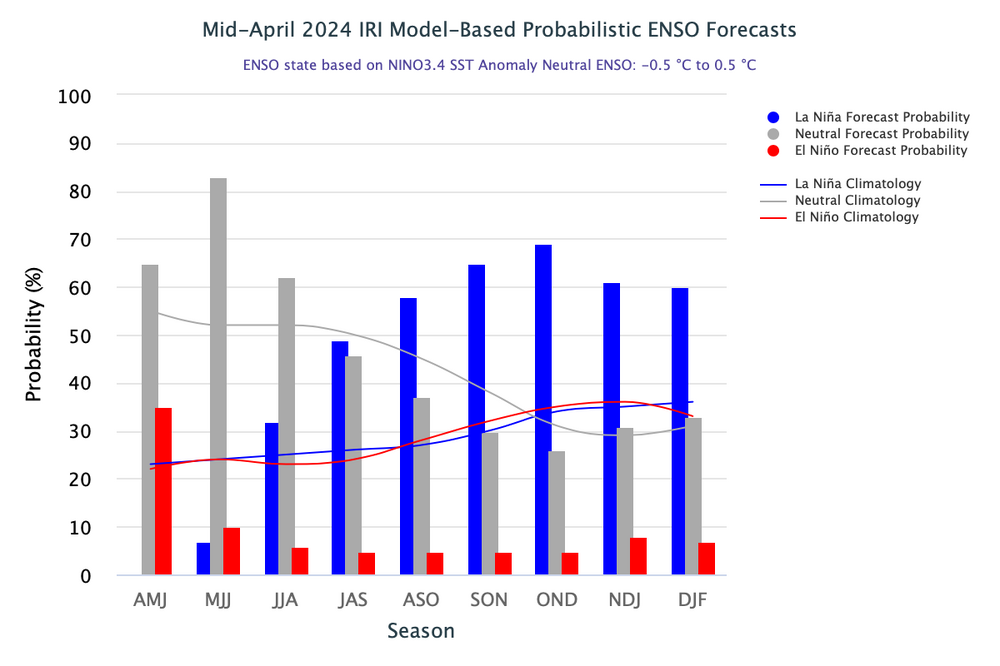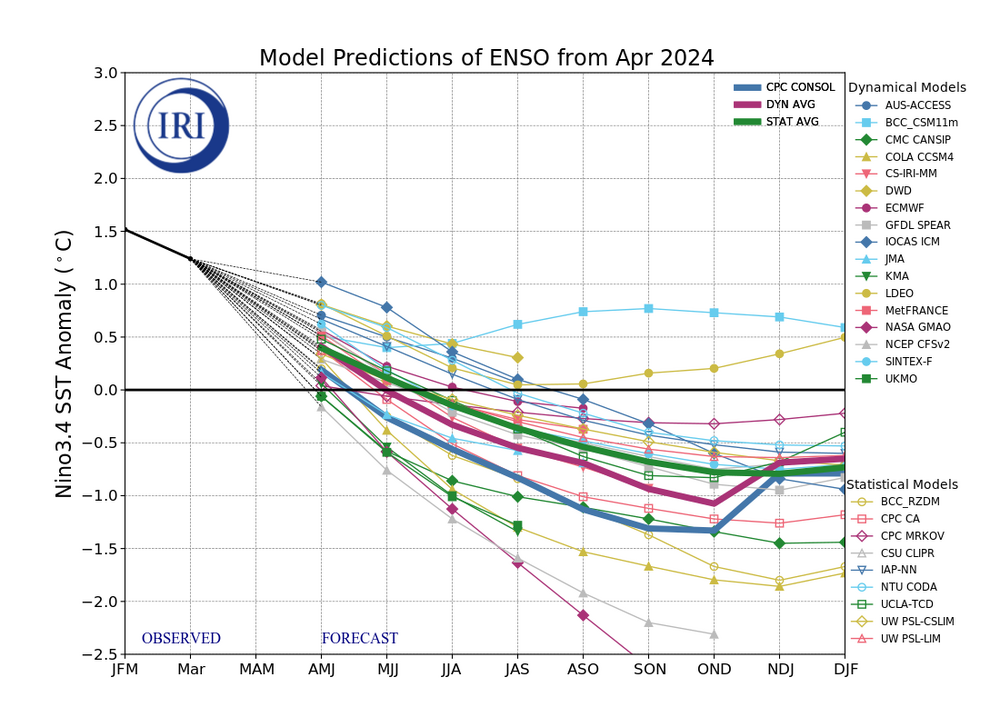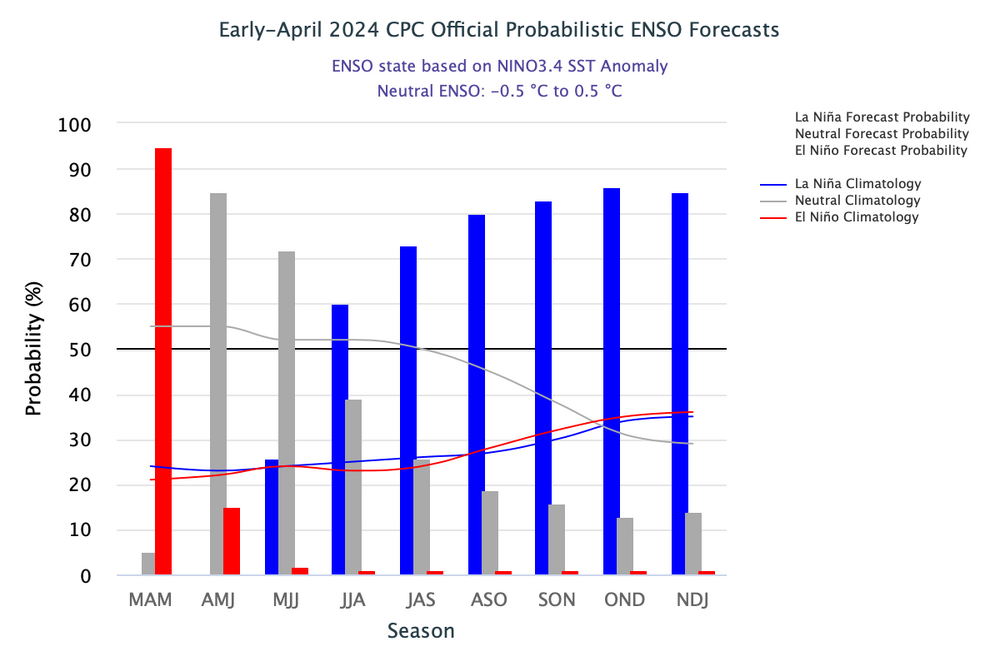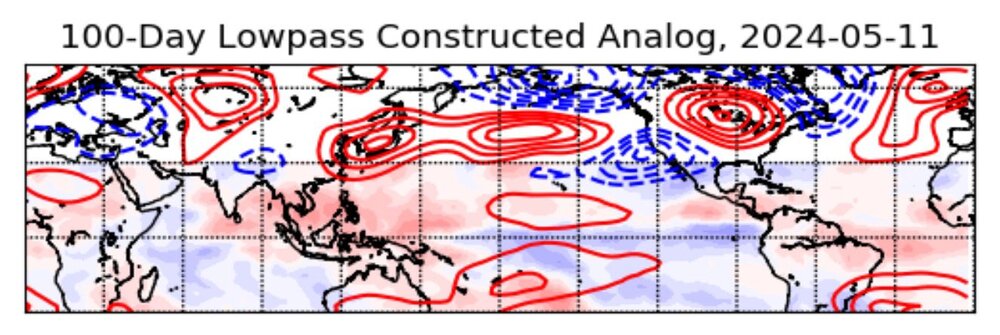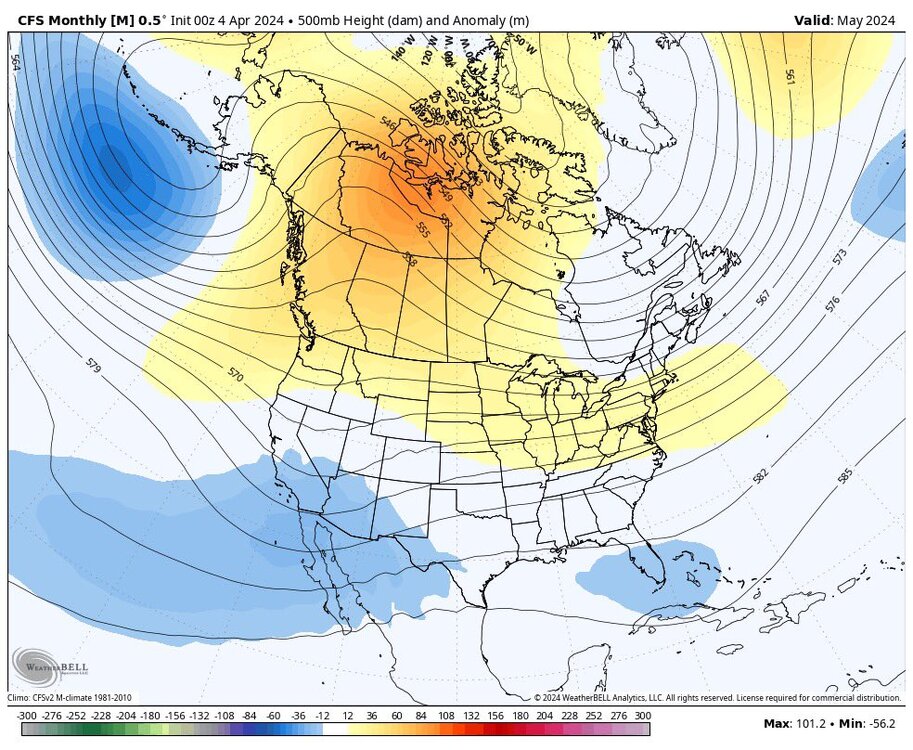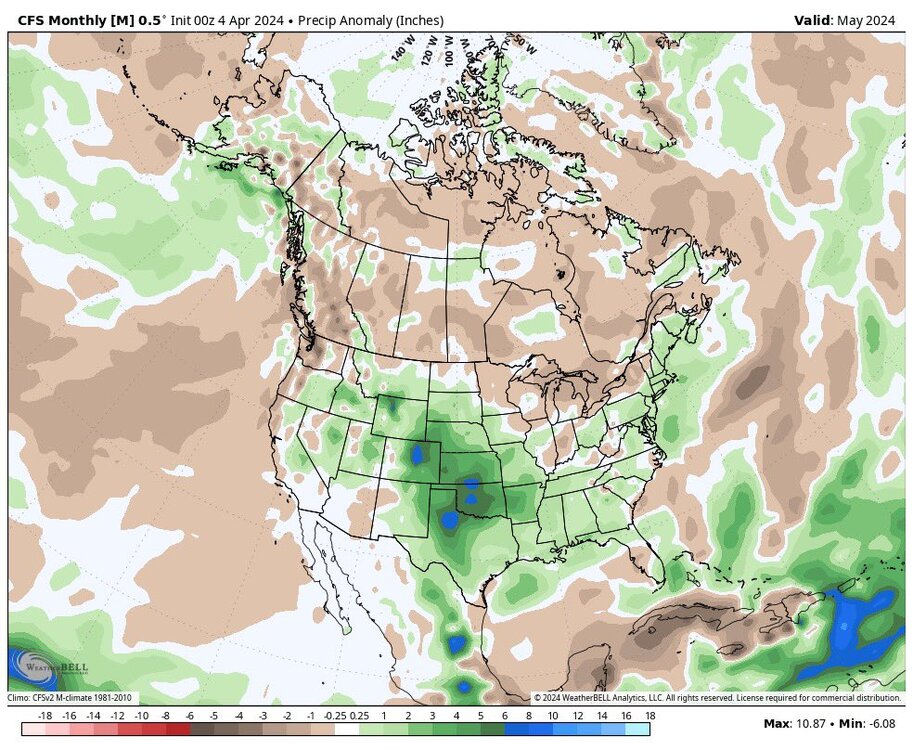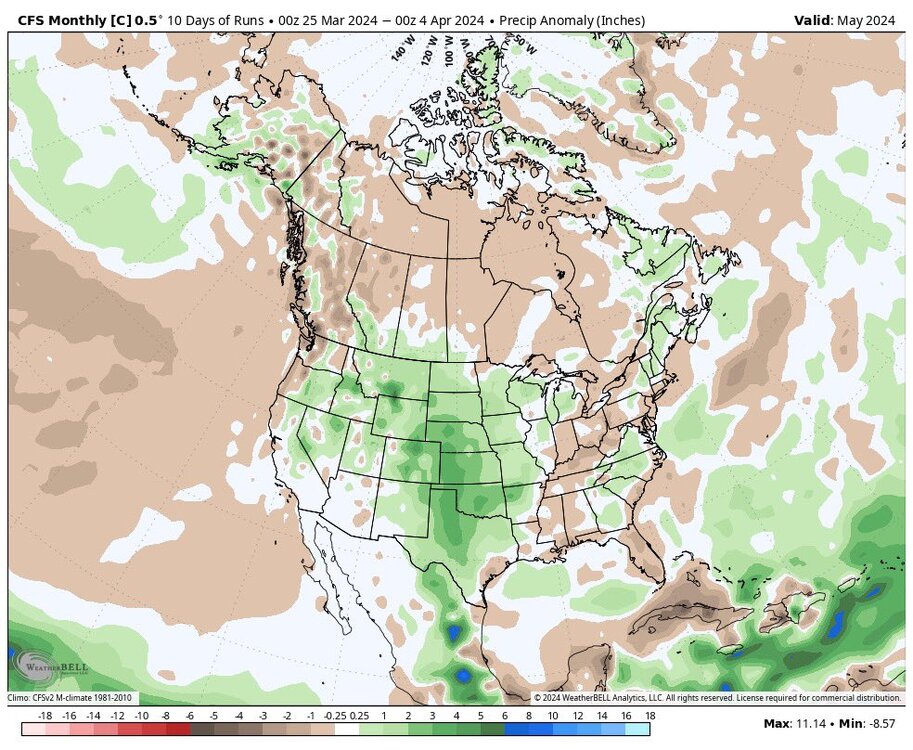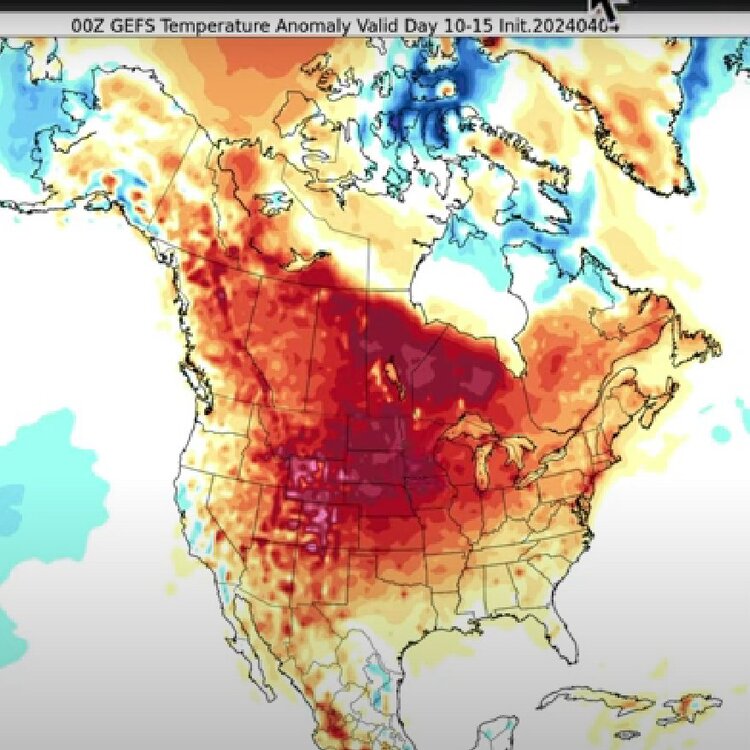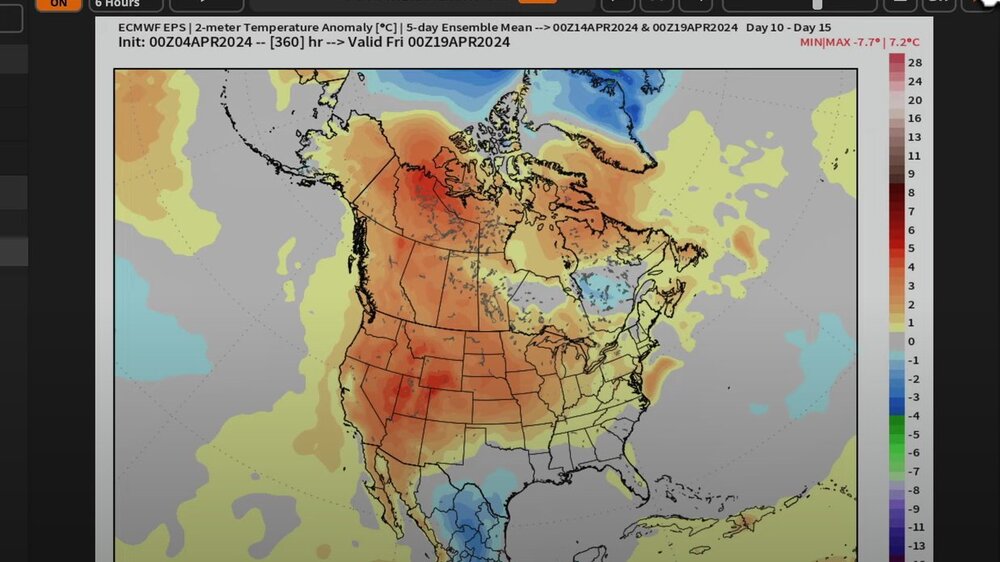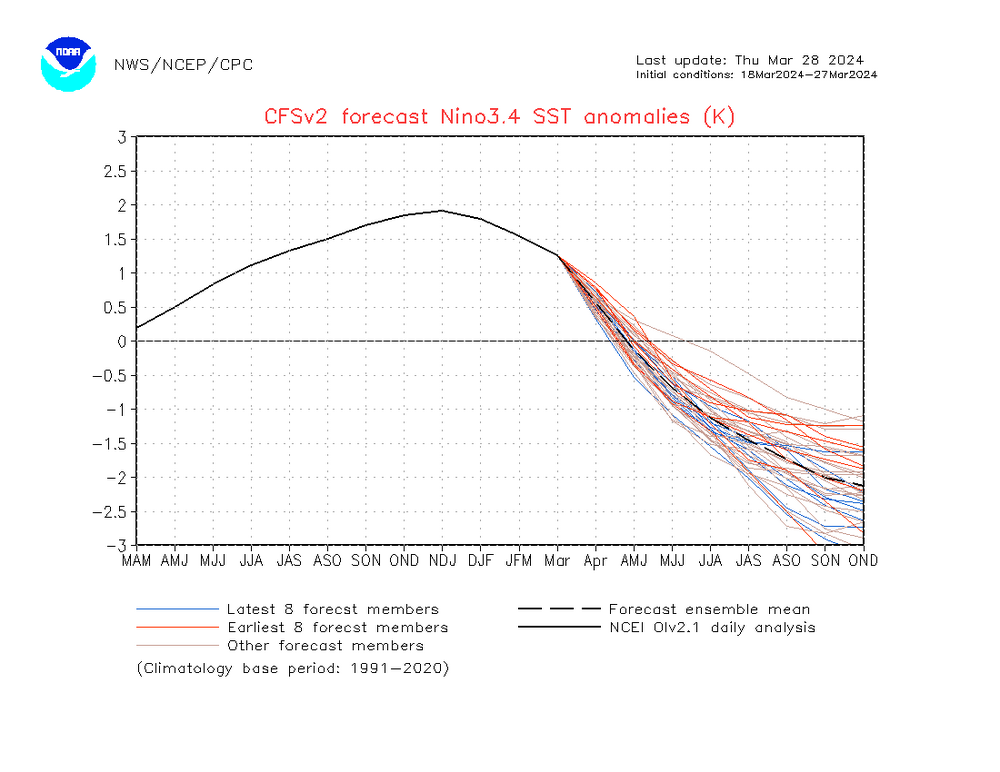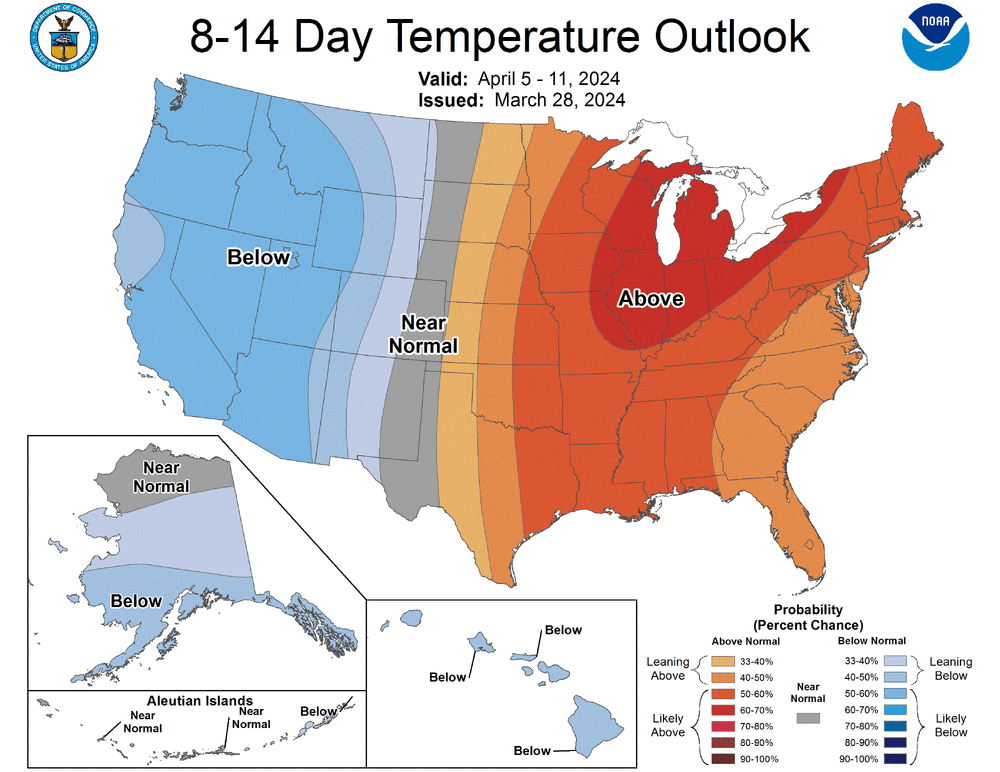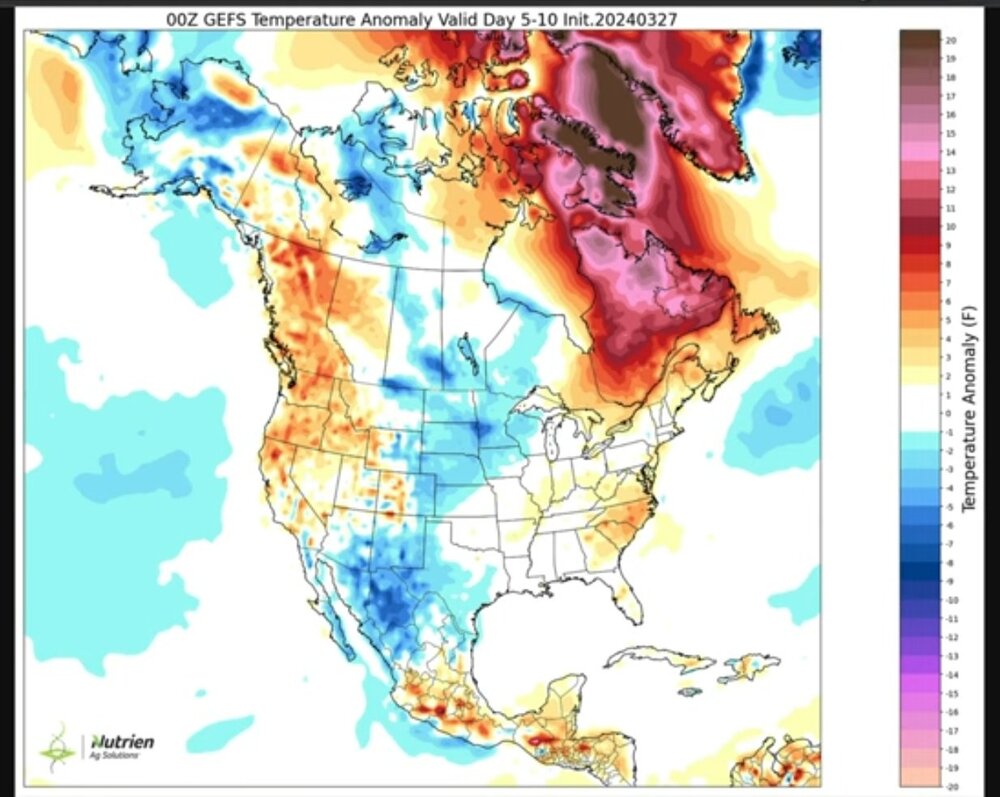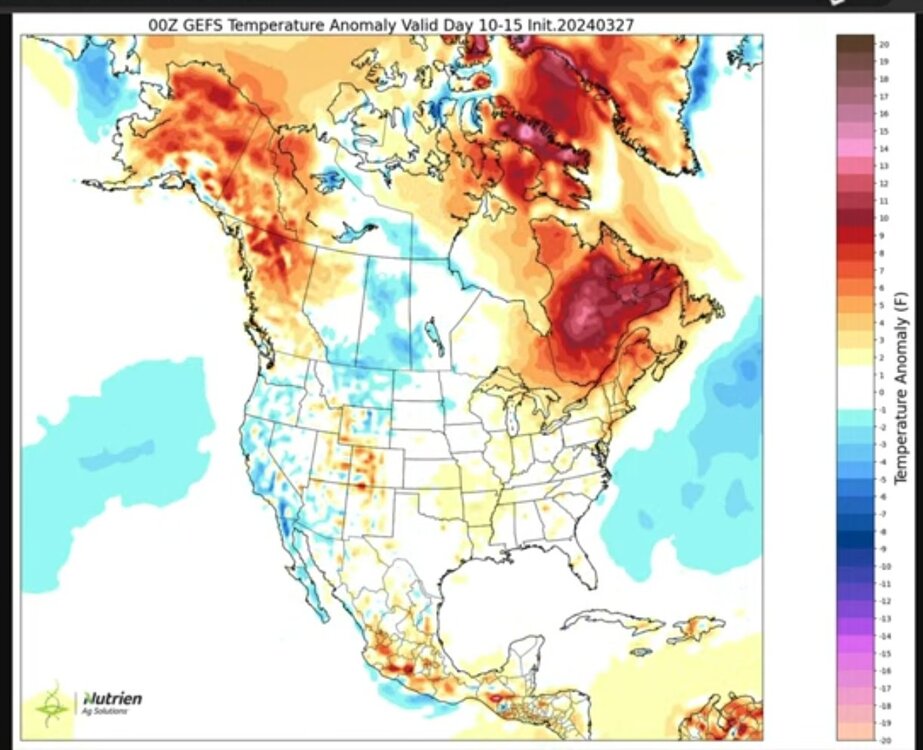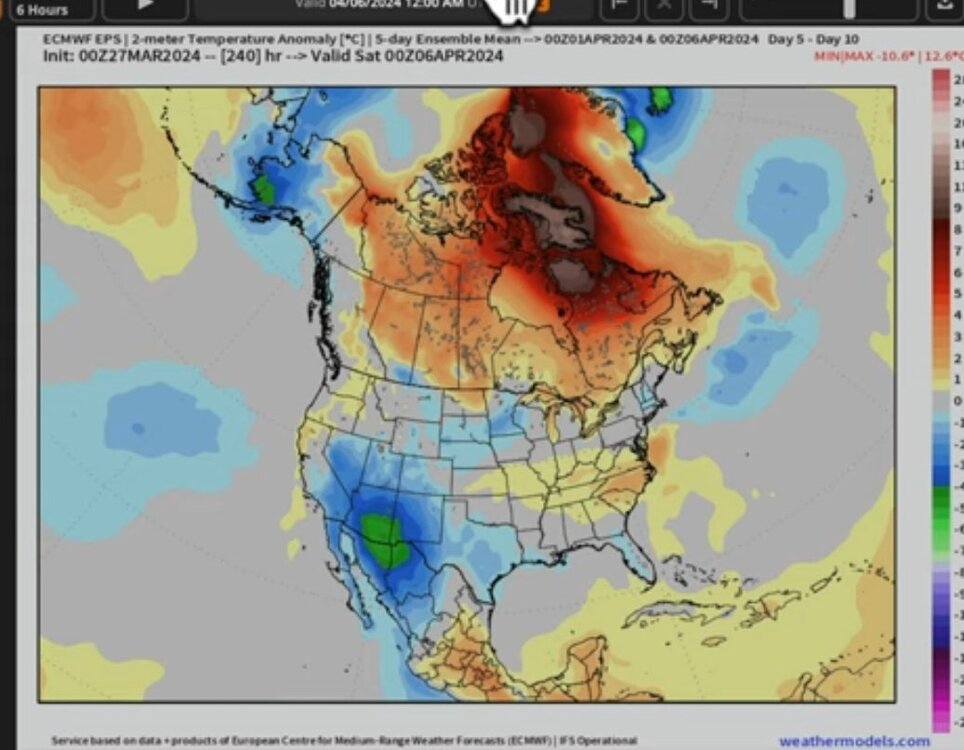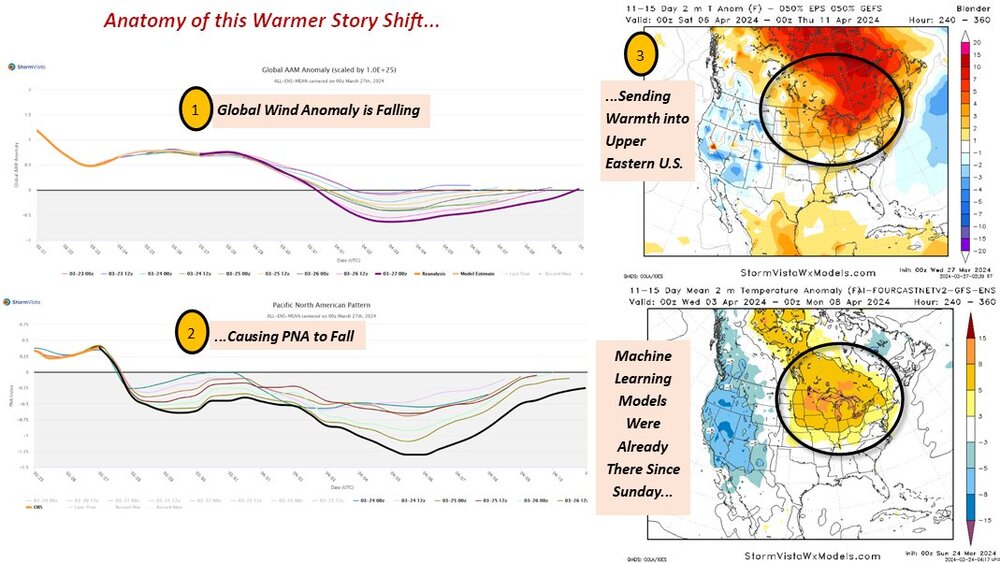
PhiEaglesfan712
Members-
Posts
40 -
Joined
-
Last visited
Content Type
Profiles
Blogs
Forums
American Weather
Media Demo
Store
Gallery
Everything posted by PhiEaglesfan712
-
2024-2025 La Nina
PhiEaglesfan712 replied to George001's topic in Weather Forecasting and Discussion
The FMA numbers from NOAA are in. 2010 is still the best analog year for the RONI. NDJ 2009 1.57 DJF 2010 1.45 JFM 2010 1.09 FMA 2010 0.62 OND 2023 1.49 NDJ 2023 1.47 DJF 2024 1.21 JFM 2024 0.85 FMA 2024 0.48 -
E PA/NJ/DE Spring 2024 OBS/Discussion
PhiEaglesfan712 replied to Hurricane Agnes's topic in Philadelphia Region
New record high of 90F at PHL today. This makes April 24 the new latest day with a sub-90 record high. -
E PA/NJ/DE Spring 2024 OBS/Discussion
PhiEaglesfan712 replied to Hurricane Agnes's topic in Philadelphia Region
I like 2010 as the analog year for May and the summer. I think after the mid-month cool down, we'll see well above average temperatures the final third of May and will be the prevalent theme throughout most of the summer. -
Devils fan here. Don't be too confident about the Flyers making the playoffs next year. I learned this the hard way. After last season, I assumed we were going to take the next step and contend for the Stanley Cup this year. Instead, we got a regression this year. I'm not saying this will happen to the Flyers next year, but they've overachieved this year (like the Devils did last year), so it's possible they could step back next year instead of taking the leap forward to the playoffs.
-
E PA/NJ/DE Spring 2024 OBS/Discussion
PhiEaglesfan712 replied to Hurricane Agnes's topic in Philadelphia Region
Here is the analysis for PHL during the same period. The 2010s, on the strength of the first 3 years (2010-2012) broke the record by over one degree from the previous decade. The 2020s are on pace to break that record. 1890s - 51.84 1900s - 52.51 1910s - 52.98 1920s - 53.23 1930s - 53.18 1940s - 52.81 1950s - 52.83 1960s - 51.31 1970s - 53.16 1980s - 52.89 1990s - 53.85 2000s - 54.17 2010s - 55.38 2020s - 55.34 (this will likely increase after 2024) Long term average: 53.16 -
E PA/NJ/DE Spring 2024 OBS/Discussion
PhiEaglesfan712 replied to Hurricane Agnes's topic in Philadelphia Region
lol, I don't know what cold spring you're talking about because this one has been several degrees above average. 1996 and 1997 were actual cold springs, not this one. Besides, we're going to get another 80+ degree day on Monday. -
2024-2025 La Nina
PhiEaglesfan712 replied to George001's topic in Weather Forecasting and Discussion
-
2024-2025 La Nina
PhiEaglesfan712 replied to George001's topic in Weather Forecasting and Discussion
If we're using the RONI, then 2010 is the best fit year. Both el nino peaks were about the same, and at the same time. It looks like this year is falling at a faster rate. (Next best fit year would be 1988, but that el nino peaked earlier in the season.) NDJ 2009 1.57 DJF 2010 1.45 JFM 2010 1.09 OND 2023 1.49 NDJ 2023 1.47 DJF 2024 1.21 JFM 2024 0.86 JAS 1987 1.47 ASO 1987 1.43 SON 1987 1.24 OND 1987 1.02 NDJ 1987 0.93 DJF 1988 0.65 JFM 1988 0.30 RONI peaks for the 1988-89 and 2010-11 La Ninas. OND 1988 -1.92 NDJ 1988 -1.93 SON 2010 -1.70 OND 2010 -1.70 My guess is that the RONI peaks around -1.8 in late fall (SON/OND). -
2024-2025 La Nina
PhiEaglesfan712 replied to George001's topic in Weather Forecasting and Discussion
-
2024-2025 La Nina
PhiEaglesfan712 replied to George001's topic in Weather Forecasting and Discussion
I will say this, if there was one thing unprecedented about the 2020-23 La Nina, it's the fact that it maintained the same strength for all 3 years. I can see an ENSO Neutral state lasting for several years, but maintaining a la nina event at -1 to -1.2C for 3 consecutive years should seem nearly impossible. I highly doubt something like that is going to happen again in our lifetimes. -
2024-2025 La Nina
PhiEaglesfan712 replied to George001's topic in Weather Forecasting and Discussion
Triple-year la ninas color coded Weak La Nina: Moderate La Nina: Strong La Nina: 1908-09, 1909-10, 1910-11 1915-16, 1916-17, 1917-18 1954-55, 1955-56, 1956-57 1973-74, 1974-75, 1975-76 1998-99, 1999-00, 2000-01 2020-21, 2021-22, 2022-23 -
2024-2025 La Nina
PhiEaglesfan712 replied to George001's topic in Weather Forecasting and Discussion
I'd say the 1954-57 (end date may be late 56) la nina event would be the closest comparison to 2020-23. The mid-50's la nina event was preceded by a disjointed triple el nino, with the last 2 years (1952-53 and 1953-54) being very weak. Plus, the third year of each la nina (56-57 and 22-23) dissipated early and transitioned into strong el ninos. Although, it looks like the trend will end, as 2024-25 is likely to be a strong la nina, while 1958-59 was still a weak el nino. -
2024-2025 La Nina
PhiEaglesfan712 replied to George001's topic in Weather Forecasting and Discussion
1915-16 to 1917-18 and 1954-55 to 1956-57 can be considered triples as well. Both had strong 2nd year events, surrounded by weaker Year 1 and 3 events. So, 6 triple-year la ninas in over 115 years. -
2024-2025 La Nina
PhiEaglesfan712 replied to George001's topic in Weather Forecasting and Discussion
-
E PA/NJ/DE Spring 2024 OBS/Discussion
PhiEaglesfan712 replied to Hurricane Agnes's topic in Philadelphia Region
Back home now from Buffalo. While I didn't get the full experience of the eclipse due to the clouds, I was glad to see one last gasp of snow on Friday. I got to experience the four seasons in less than a week. Friday - Winter, Saturday to Monday - Spring, Tuesday - Summer, yesterday - Autumn -
E PA/NJ/DE Spring 2024 OBS/Discussion
PhiEaglesfan712 replied to Hurricane Agnes's topic in Philadelphia Region
Still in Buffalo, where it is 78. Hard to believe, but that's not a record. It does beat out the 72 from March 4 and 5, and is the average high for July. It never got this hot the 3 days I was here in July 2009. -
E PA/NJ/DE Spring 2024 OBS/Discussion
PhiEaglesfan712 replied to Hurricane Agnes's topic in Philadelphia Region
-
E PA/NJ/DE Spring 2024 OBS/Discussion
PhiEaglesfan712 replied to Hurricane Agnes's topic in Philadelphia Region
-
April 8, 2024 Eclipse
PhiEaglesfan712 replied to Cat Lady's topic in Weather Forecasting and Discussion
I'll be in the Buffalo area. Do you think I'll be able to get a good view if I go to Niagara Falls? -
April 8, 2024 Eclipse
PhiEaglesfan712 replied to Cat Lady's topic in Weather Forecasting and Discussion
If you haven't seen one before, then don't cancel the reservations. If there is even a small chance that you'll get a good view of the eclipse, you go see it. You'll have more regrets if the weather turned out to be fine and you missed out, than if you go and the weather wasn't ideal. -
2024-2025 La Nina
PhiEaglesfan712 replied to George001's topic in Weather Forecasting and Discussion
CFSv2 ENSO probability index has 2024-25 challenging 1973-74 and 1988-89 for the strongest la nina ever: -
E PA/NJ/DE Spring 2024 OBS/Discussion
PhiEaglesfan712 replied to Hurricane Agnes's topic in Philadelphia Region
-
April 8, 2024 Eclipse
PhiEaglesfan712 replied to Cat Lady's topic in Weather Forecasting and Discussion
-
E PA/NJ/DE Spring 2024 OBS/Discussion
PhiEaglesfan712 replied to Hurricane Agnes's topic in Philadelphia Region
-
2024-2025 La Nina
PhiEaglesfan712 replied to George001's topic in Weather Forecasting and Discussion
List of El Nino to La Nina transition years (bolded are best analog years for 2024-25) 1954: Weak El Nino -> Weak La Nina (followed by Strong La Nina in 1955-56) 1964: Moderate El Nino -> Weak La Nina 1970: Weak El Nino (preceded by Moderate El Nino in 1968-69) -> Moderate La Nina 1973: Super El Nino -> Strong La Nina 1983: Super El Nino -> Weak La Nina (followed by Moderate La Nina in 1984-85) 1988: Strong El Nino -> Strong La Nina 1995: Moderate El Nino -> Moderate La Nina 1998: Super El Nino -> Strong La Nina (repeated in 1999-2000) 2005: Weak El Nino -> Weak La Nina 2007: Weak El Nino -> Strong La Nina 2010: Strong El Nino -> Strong La Nina 2016: Super El Nino -> Weak La Nina (repeated in 2017-18) 2020: Maybe Weak El Nino (preceded by Weak El Nino in 2018-19) -> Moderate La Nina (repeated in 2021-22 and 2022-23)




